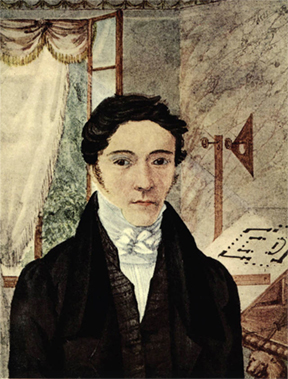The Advent of the Paper Machine
Nicholas-Louis Robert
In 1798, the Frenchman Nicholas-Louis Robert (1761-1828) invented a prototype of a machine on which paper was formed on a continuous sheet of wire cloth. The invention was patented on January 18, 1799. After Robert, a sargeant-major, left the French army, he had gone to work as a proofreader for the noted printer Pierre-Francois Didot, and was soon placed in charge of the accounting department at son St. Leger Didot's mill in Essones, France. While there, Robert had conceived the idea of a machine to produce a continuous roll of paper to fill the urgent need for banknotes after the French Revolution.
St. Leger Didot encouraged Robert to use the mill's workshop and materials in the development of the paper machine. After five years of work, Robert completed the design and sold his patent rights to St. Leger Didot for the sum of 27,400 francs. Financial difficulties at the mill, however, prevented Didot from paying Robert for the patent, and although Robert eventually recovered ownership, he was never able to realize any money for his invention.

Portrait of Nicholas-Louis Robert
(text and background only visible when logged in)
The Fourdriniers
Didot took the models created by Robert to his English brother-in-law, John Gamble, who secured English patent 2487 for an improved version of the machine in April 1801. The improved machine came to the attention of brothers Henry and Sealy Fourdrinier, who engaged engineer Bryan Donkin and built a new and further improved machine in 1807. Although the Fourdriniers invested up to 60,000 pounds on the development of this machine, they received no royalties because of an error in their patent. They did gain some recognition, however, as most modern paper machines are referred to as "fourdrinier" machines. Bryan Donkin was the only person who gained financial security from his work on the paper machine; by 1851, he had designed a total of 191 machines, including 83 for British mills, 105 for Europe, one for India, and two for the United States.
(text and background only visible when logged in)
The First Paper Machines in America
The first fourdrinier machine in the US was imported from England and erected in Saugerties, New York, in 1827. The second was built in Connecticut by mechanic George Spafford. He and his partner, James Phelps, completed the first American-built fourdrinier in May 1829 and sold it to Amos Hubbard at a cost of $2,426.
In 1809, a cylinder-type paper machine was introduced by John Dickinson of Hertfordshire, England. Amid great secrecy, Thomas Gilpin built the first cylinder machine in America at Brandywine Creek, Pennsylvania. It produced a sheet 30 feet wide at a rate of 60 feet per minute.
